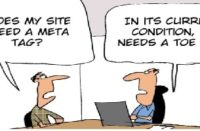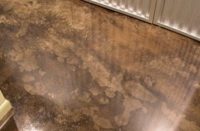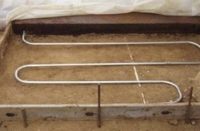Let’s start with a few questions and then a challenge. Where do you see your business this time next year? What about the year after?
Are you content with installing decorative concrete countertops, overlays and stamped concrete, or do you have what it takes to rise to the occasion?
For me the next step was a transition from running a typical decorative concrete business in California to a new venture in Wyoming: constructing new homes and buildings that include decorative concrete as a large part of their design and function. This fresh idea is one I strongly encourage each concrete professional to consider.
The building industry is competitive, whether we’re talking about new home construction, remodeling, pools or light commercial. But many years ago I made an interesting observation that few in the building industry use to their advantage. The type of person attracted to decorative concrete is usually willing to invest more money in their project. They are also less likely to focus on price and more likely to choose a builder familiar with attractive new trends that include decorative concrete.
Decades ago I used a similar trend to transition from structural concrete to decorative concrete. I found it takes the same relative effort to broom a natural gray driveway or patio as it does to texture-stamp, but the profit increases by an average of 20 percent to 30 percent. Plus, there is much less competition in decorative stamped concrete.
Flashing forward to today, the same opportunity exists but on a much larger scale. This opportunity can work in your favor beyond what most decorative concrete professionals can imagine. Today’s mid- to high-priced homes no longer have just a small stamped entry or porch like a decade or two ago. They now have decorative concrete finished floors, concrete fireplace mantels, and concrete countertops — even decorative concrete fixtures and furniture. The same goes for many high-end commercial projects too.
A perfect example of this is a house my company just finished. This home is about 2,000 square feet with a build-out cost of about $280,000. Of this cost, the decorative concrete portion is more than 20 percent, or about $55,000. With so much of the home cost and design built around decorative concrete, why would anyone but a decorative concrete professional construct the building?
Exposure is what propels a growing trend, and our decorative concrete industry is no different. Folks now gravitate to the appealing nature of decorative concrete artistry. They are amazed how a piece of concrete can be individualized to a person’s taste and décor. Few other construction mediums have the same appealing flexibility as decorative concrete.
This trend also goes beyond appeal. Folks today are consciously using practices that consider longevity and sustainability. This dovetails perfectly with our decorative concrete industry.
So the question remains: How does a company now offering decorative concrete services transition into a general contracting firm? A soft entry could be as easy as a remodel or room addition project. Maybe moving beyond installing stamped pool decking to building the entire pool could be an option. Regardless, this opportunity is as vast as your willingness and effort to promote this new trend.
Building a team
Honestly, few among us have the experience or knowledge to build a project from start to finish. This is why it’s important to surround yourself with a team of professionals who understand the importance of protecting a decorative concrete floor while building a structure around it. You as the primary builder will take control to organize, communicate and implement the steps necessary to successfully complete a building project. Learning how all the trades come together will take time but be well worth the effort over the long term.
Some will find it challenging to move from a hands-on position to one of supervision and organizing. This change, too, will come with time as your daily activities change along with this new business structure. I personally have found it beneficial to play an active part in the project’s design phase in order to make sure decorative concrete fits nicely with all the other project features.
Profitability
The fact is, you can be one of the best in any industry yet still not be profitable. Playing a major role in a remodel or new construction project provides the best opportunity for profitability. Profit is no accident. Profit is the result of preplanned effort combined with skill. Proper planning and organization will condense a completed project from six months to four. As the primary or general contractor, you have the opportunity to create and build efficiently.
We mentioned earlier how competitive the building industry can be. This competitiveness is less pronounced in decorative concrete, because project owners who desire it as part of their new project’s design are typically less concerned with cost. The fact that you have the talent capable of meeting this need is advantageous, not to mention potentially profitable. For years, builders unfamiliar with decorative concrete have tried to hold the market back by dissuading customers away from our industry. This dissuasion is no longer possible thanks to the advancing effort from decorative concrete professionals worldwide.
What will you have to change?
Below is a list of significant aspects of your business that you need to consider as you contemplate making a change from subcontractor to general builder. I found some items, like cash flow for instance, became less complex since my firm could control the flow of money. The costs of other items, such as liability insurance, increased but were easily absorbed part by part into each project.
- Contractor license requirements in your state or city.
- Bonding and liability protection (insurance).
- Cash flow.
- Branding or business name change.
- Fresh marketing plan.
- Education.
















